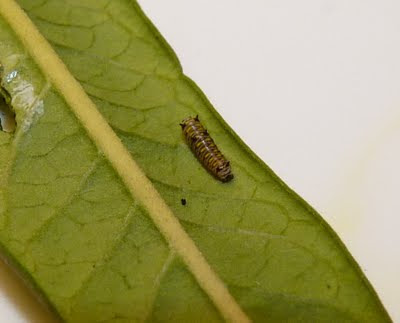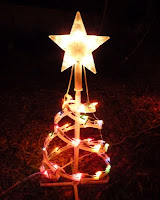
My Florida Backyard has two palm trees. One is a date palm, and is within our property lines, so we're responsible for the maintenance. The other, a royal palm, is technically on land owned by the HOA, so they take care of trimming it a few times a year.
It's been awhile since the royal palm has been pruned, and the dead fronds have started to accumulate. Dead fronds are a normal part of the growth of a palm tree - as the tree grows taller, the lower fronds die and fall off in their own time. Of course, in hurricane country, it's a good idea to prune these dead fronds yourself, before the wind can do it for you, because the wind is not very particular about where it deposits the trimmings.
Case in point: it's been very windy today, with gusts up to 35 miles an hour. Hurricane Ida is kicking around out in the Gulf of Mexico, and the atmosphere in the region is pretty unstable. So while it was a beautiful sunny afternoon with a high of 86, the winds made everything feel just a little - unsettled. By mid-afternoon, when the wind gusts were particularly strong, the dead palm fronds were falling off at a pretty regular rate. In a short amount of time, we had 5 fronds on the ground and 1 on the roof.

When we first became the proud owners of a palm tree, we were surprised to find just how tough the palm fronds really are. You can't just break or fold them down into smaller pieces - they don't bend very easily. You can see why early settlers used them in building shelters; they're very hardy. In fact, we're quite lucky none of them hit the screens at the wrong angle - they would easily tear large jagged holes given the opportunity.

The lesson here is that if you do own a palm tree, it's best to keep the dead parts pruned pretty regularly. If you're not familiar with palm trees, you may want to pay someone to do the job properly - it's pretty easy to do damage to them. The number one rule: don't trim any fronds that are still green. Living fronds are helping to build up the strong flexible trunk of the tree, and shouldn't be removed until they're ready to come off.
Click here for more information on properly pruning your palms.Overall, though, palms are a pretty low-maintenance tree, and they fit perfectly in My Florida Backyard!
P.S. We're keeping an eye on
Hurricane Ida, of course, although we're not terribly worried. She's about to move over the colder water of the Gulf, and will encounter some high wind shear. She'll most likely hit the coast between Mississippi and Pensacola, but could turn back toward us depending on the frontal system she merges with. Late season storms are particularly tricky to predict, so the only safe thing to do is stay alert and be prepared... done and done!
 There's something so wonderful to me as a native of the cold north to be out tending a butterfly garden surrounded by Christmas lights - I never get tired of it. On the same day I put up the Christmas tree, I planted some new milkweed plants and transplanted a passionvine - it really is the most wonderful time of the year!
There's something so wonderful to me as a native of the cold north to be out tending a butterfly garden surrounded by Christmas lights - I never get tired of it. On the same day I put up the Christmas tree, I planted some new milkweed plants and transplanted a passionvine - it really is the most wonderful time of the year!















